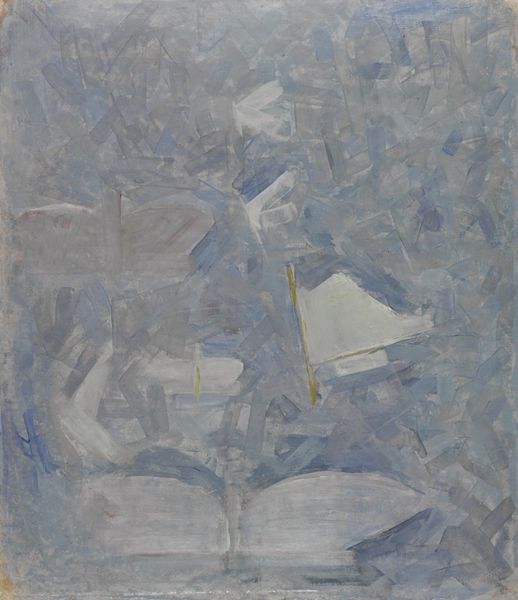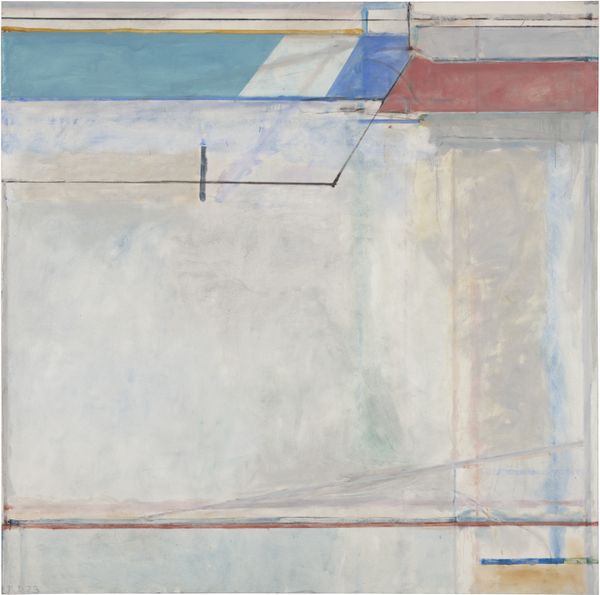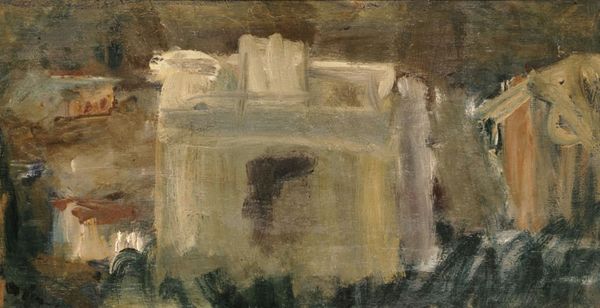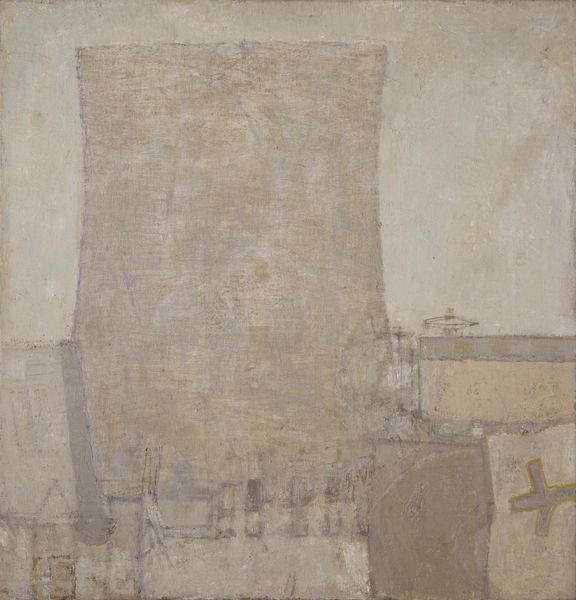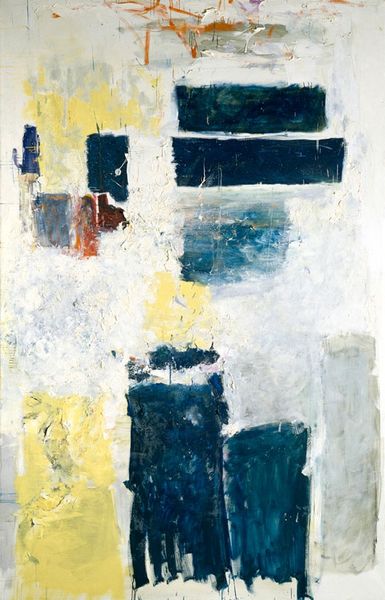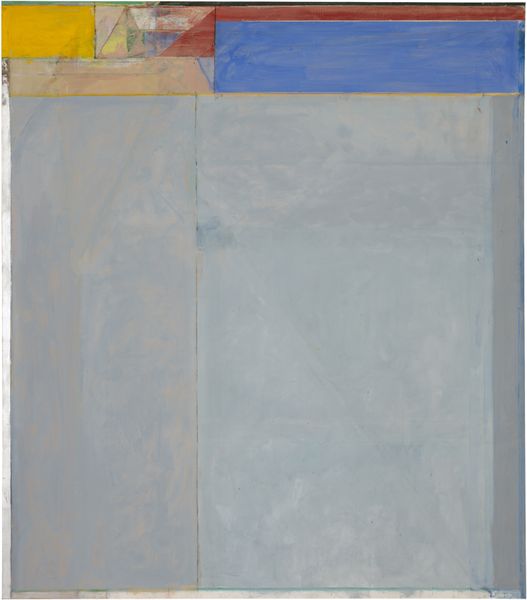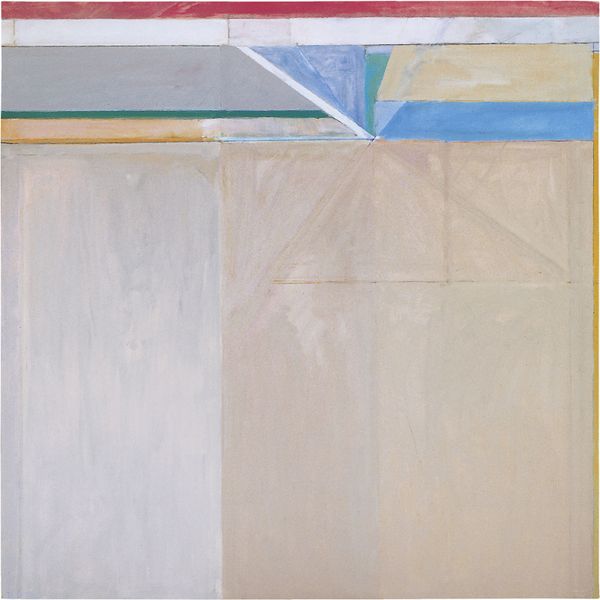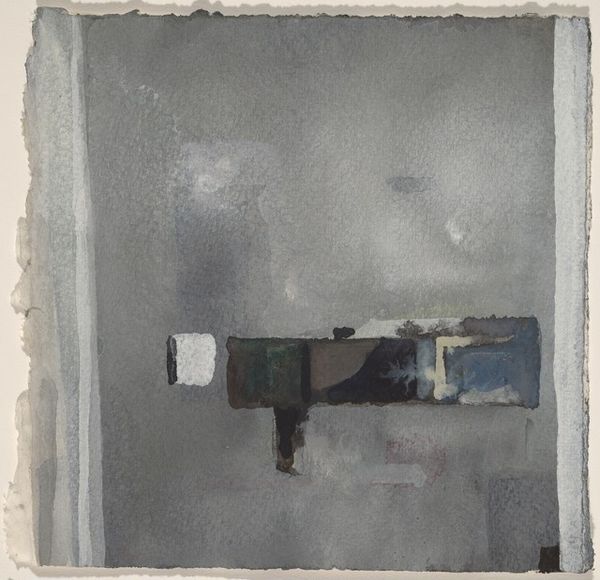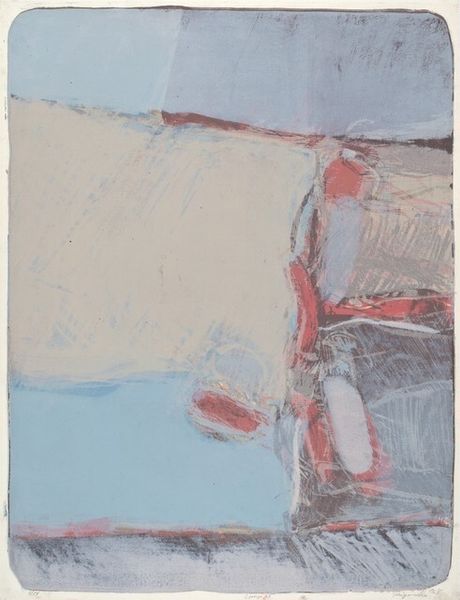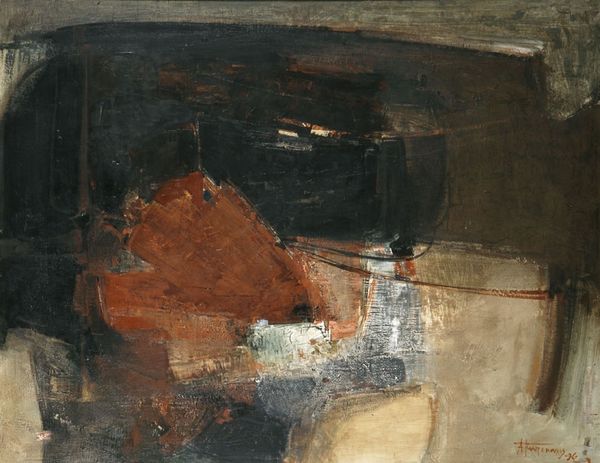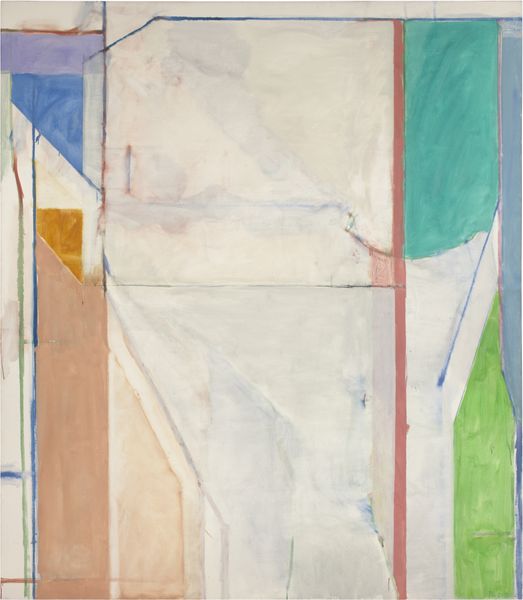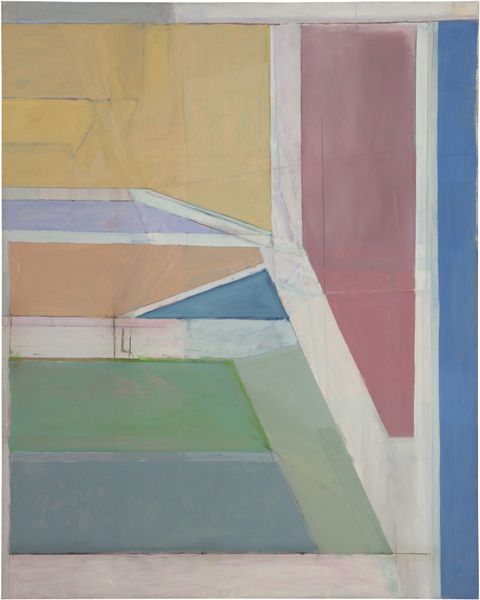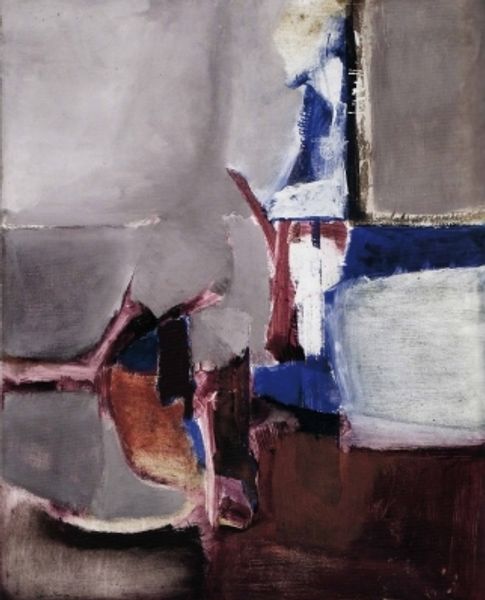
Dimensions: support: 937 x 759 mm frame: 983 x 804 x 70 mm
Copyright: © Angela Verren Taunt 2014. All rights reserved, DACS | CC-BY-NC-ND 4.0 DEED, Photo: Tate
Curator: Ben Nicholson's 1932 (Auberge de la Sole Dieppoise) presents us with a canvas of layered greys and whites, a sort of ghostly recollection of a place. Editor: Yes, it feels incredibly dreamlike, almost faded, like a memory struggling to surface. I see traces of figures and lettering...what is that, a menu? Curator: Precisely. Nicholson was known for incorporating elements from his surroundings. Here, we see fragments of the Auberge de la Sole Dieppoise, a restaurant he visited, worked into the composition. Editor: So the art becomes a record of cultural experience, the act of eating and being in a specific place at a specific time... a very personal geography. I wonder, what does this say about Nicholson's relationship to place and identity? Curator: It speaks to the modernist impulse to capture the essence of a place, the fleeting moments, and the artist’s unique perspective. Editor: It’s more than just visual; it evokes the feeling of a memory, of a shared experience, of a cultural moment filtered through one consciousness. Curator: Indeed, it’s a beautiful synthesis of the personal and the historical.
Comments
tate 6 months ago
⋮
http://www.tate.org.uk/art/artworks/nicholson-1932-auberge-de-la-sole-dieppoise-t00944
Join the conversation
Join millions of artists and users on Artera today and experience the ultimate creative platform.
tate 6 months ago
⋮
This painting depicts the likeness of Barbara Hepworth reflected in the window of a modest hotel-restaurant. In the summer of 1932 Nicholson and Hepworth visited cubist painter Georges Braque in Dieppe. The use of words to emphasise the flatness of the picture surface was a device employed by Braque between 1910 and 1920, but the sparseness of the composition and lack of tangible objects was particular to Nicholson. He wrote that the paintings’ roughness was a forerunner of his first abstract relief, made at the end of 1933. Gallery label, September 2016
